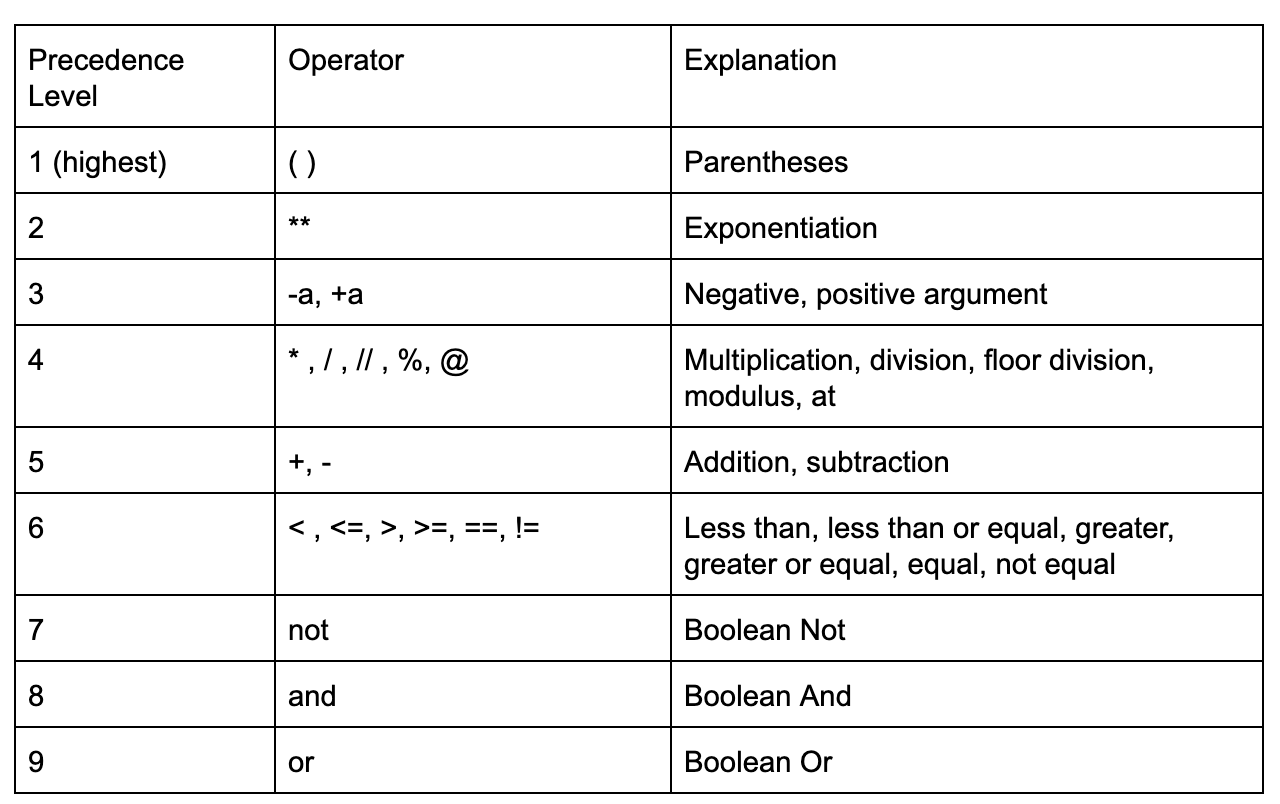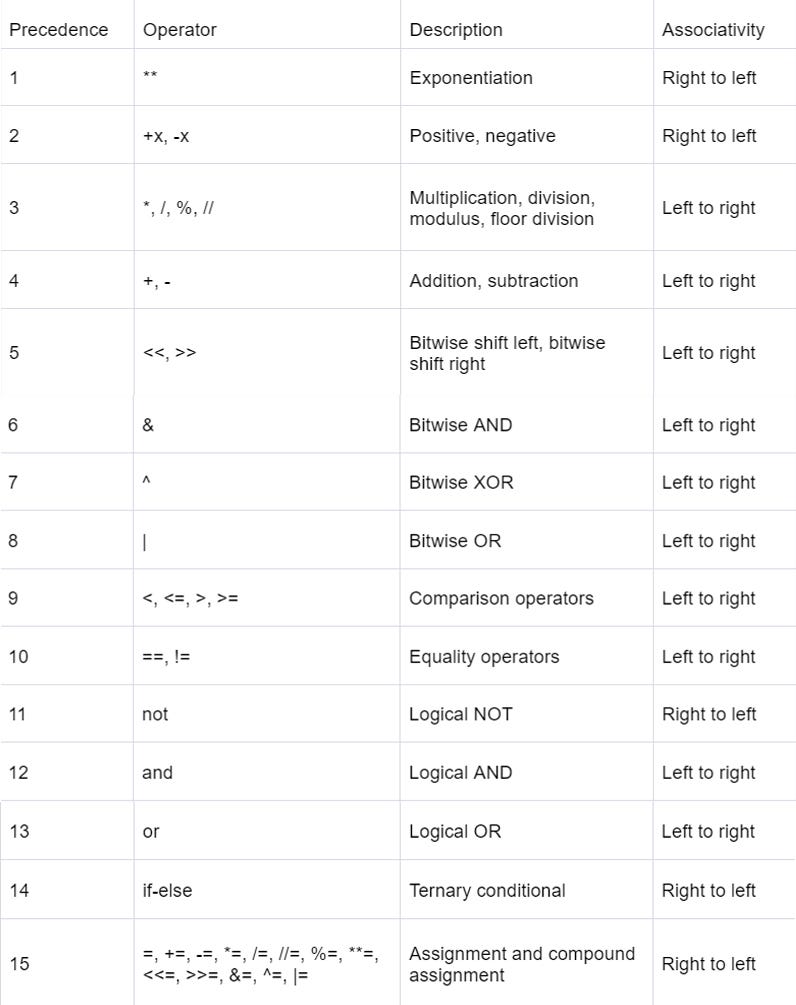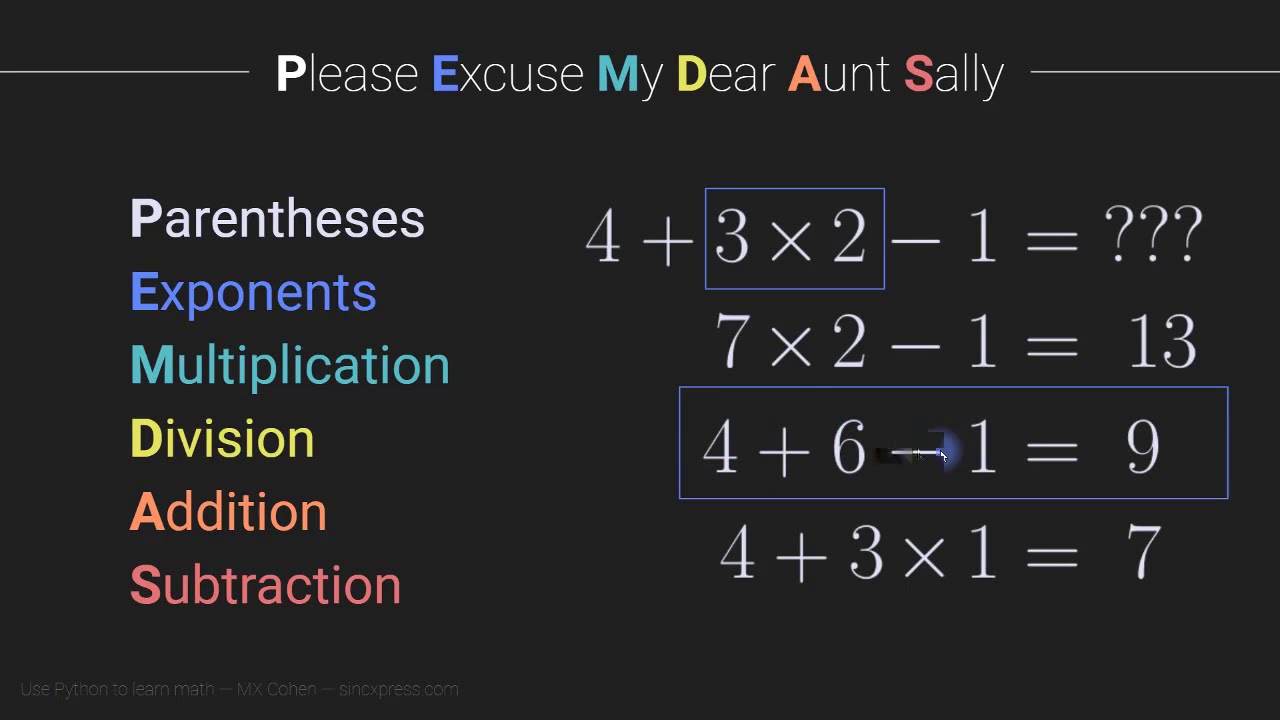What is an operation in python with example
What is an operation in python with example
I'd be happy to explain operations in Python with examples!
In Python, operations refer to the actions performed on data structures such as numbers, strings, lists, dictionaries, etc., to manipulate or combine them in a specific way.
There are several types of operations in Python:
Arithmetic Operations: These are used to perform mathematical operations on numeric values. Examples include addition (+), subtraction (-), multiplication (*), division (/), modulus (%), power (^). For instance: x = 5
y = 3
print(x + y) # Output: 8 (adds 5 and 3)
print(x - y) # Output: 2 (subtracts 3 from 5)
print(x * y) # Output: 15 (multiplies 5 by 3)
print(x / y) # Output: 1.666666... (divides 5 by 3)
print(x % y) # Output: 2 (gives the remainder when 5 is divided by 3)
x = 2
y = 4
print(x ** y) # Output: 16 (raises 2 to the power of 4)
x = 5
y = 3
if x > y: # Output: True (because 5 is greater than 3)
print("x is greater than y")
else:
print("x is not greater than y")
if x == y: # Output: False (because 5 is not equal to 3)
print("x is equal to y")
x = True
y = False
if x and y: # Output: False (because one of the operands is False)
print("Both x and y are True")
if x or y: # Output: True (because one of the operands is True)
print("Either x or y is True")
if not x: # Output: False (because x is True, so its negation is False)
print("x is not True")
in, not in. For instance:
my_list = [1, 2, 3]
x = 2
if x in my_list: # Output: True (because 2 is in the list)
print("x exists in the list")
if x not in my_list: # Output: False (because 2 does exist in the list)
print("x does not exist in the list")
x = 5
y = x # assigns the value of x to y
a = [1, 2]
b = [1, 2]
if a is b: # Output: False (because they're separate lists)
print("a and b are the same")
Remember that in Python, indentation matters! Each code block should be indented using spaces or tabs.
What is Python order of operations?

I'm happy to explain the Python order of operations in detail!
In Python, the order of operations is defined by a set of rules called PEMDAS (Parentheses, Exponents, Multiplication and Division, and Addition and Subtraction). This order helps to evaluate complex expressions correctly.

Here's how it works:
1. Parentheses: When there are parentheses in an expression, you need to evaluate what's inside them first. If there are multiple sets of parentheses, follow the order from left to right. For example: 2 + (3 * 4) would evaluate as 2 + 12 because the innermost parentheses are evaluated first.
2. Exponents: Next, evaluate any exponents (such as squaring or cubing) that involve numbers and the exponentiation operator (**). For instance, 2 ** 3 would evaluate to 8.
3. Multiplication and Division: Evaluate any multiplication (*) and division (/) operations from left to right. For example: 4 * 5 / 2 would first calculate the multiplication as 20, then divide by 2 to get 10.

4. Addition and Subtraction: Finally, evaluate any addition (+) and subtraction (-) operations from left to right. For instance: 3 + 2 - 1 would add 3 and 2 to get 5, then subtract 1 to get 4.
Let's consider some examples:
2 * 3 + 4 would first multiply 2 * 3 = 6, then add 4 to get 10. (2 + 3) * 4 would evaluate the expression inside the parentheses as 5, then multiply 5 * 4 = 20. 12 / (3 - 1) would first subtract 1 from 3 to get 2, then divide 12 by 2 to get 6.
By following these rules, you can ensure that your Python expressions are evaluated correctly and consistently.
Do you have any specific scenarios or questions about the order of operations in Python? I'm here to help!





























